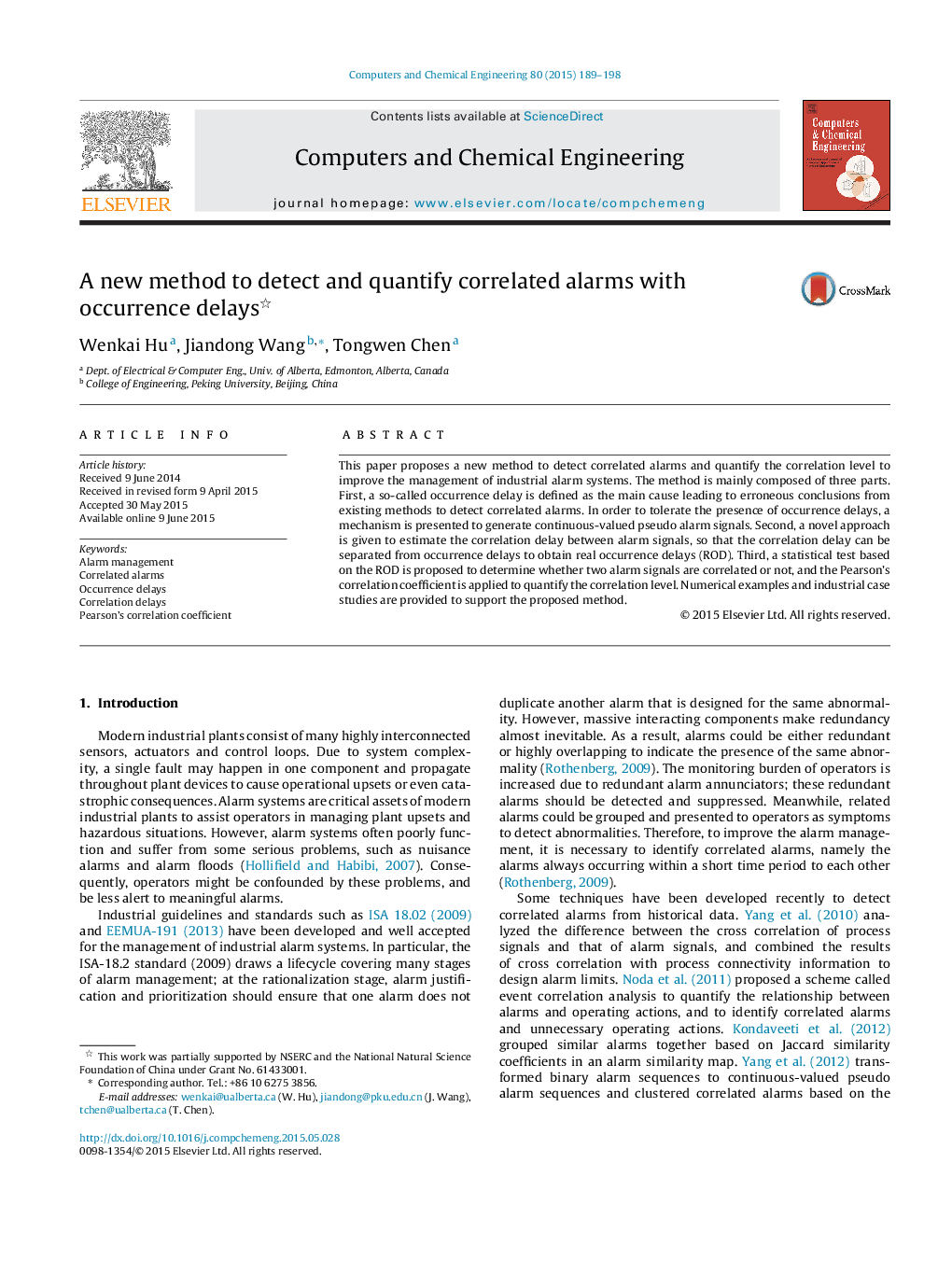| Article ID | Journal | Published Year | Pages | File Type |
|---|---|---|---|---|
| 172219 | Computers & Chemical Engineering | 2015 | 10 Pages |
•A new method is proposed to detect and quantify correlated alarms.•Occurrence delays are identified to significantly affect the detection.•Pseudo alarm signals are generated to tolerate occurrence delays.•A statistical test is formulated for detecting correlated alarms.•Pearson's correlation coefficient is used to quantify the correlation level.
This paper proposes a new method to detect correlated alarms and quantify the correlation level to improve the management of industrial alarm systems. The method is mainly composed of three parts. First, a so-called occurrence delay is defined as the main cause leading to erroneous conclusions from existing methods to detect correlated alarms. In order to tolerate the presence of occurrence delays, a mechanism is presented to generate continuous-valued pseudo alarm signals. Second, a novel approach is given to estimate the correlation delay between alarm signals, so that the correlation delay can be separated from occurrence delays to obtain real occurrence delays (ROD). Third, a statistical test based on the ROD is proposed to determine whether two alarm signals are correlated or not, and the Pearson's correlation coefficient is applied to quantify the correlation level. Numerical examples and industrial case studies are provided to support the proposed method.
